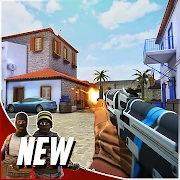How to Get Started with Nomad Sculpt?
- 1. **Download and Install**: Get Nomad Sculpt from the App Store or Google Play.
- 2. **Familiarize with Interface**: Explore the main menu, brushes, tools, and navigation.
- 3. **Basic Navigation**: Learn to pan, zoom, and rotate the view using touch gestures.
- 4. **Creating Shapes**: Start with basic primitives (cube, sphere) and modify them using scale, rotate, and move tools.
- 5. **Sculpting Techniques**: Use brushes like Pull, Smooth, and Inflate for shaping your model.
- 6. **Detailing**: Experiment with different brushes to add fine details. Use the Dynamesh function for dynamic geometry.
- 7. **Textures and Materials**: Apply textures or colors using the material options to enhance your model.
- 8. **Lighting and Environments**: Set up lighting to improve visual quality. Use the environment options for better context.
- 9. **Exporting**: Save projects in various formats (OBJ, GLB) for use in other software or 3D printing.
- 10. **Tutorials and Community**: Watch online tutorials and join forums to learn tips and get feedback.
- 11. **Practice Regularly**: Create various projects to improve skills and explore different styles.
10 Pro Tips for Nomad Sculpt Users
- 1. Utilize the Layers Feature: Organize your work by creating multiple layers for different elements or details. This allows for easier editing and manipulation without affecting the overall piece.
- 2. Experiment with Brushes: Explore various brush settings to achieve different textures and effects. Customizing brush size, opacity, and flow can significantly enhance your sculpting process.
- 3. Use Symmetry Tools: Take advantage of symmetry options to save time and maintain consistency in your designs, especially for character modeling or intricate patterns.
- 4. Optimize Your Workflow: Familiarize yourself with hotkeys and shortcuts to streamline your sculpting process, allowing for quicker navigation and adjustments.
- 5. Regularly Save Your Work: Save iterations of your project to avoid losing progress. This also allows you to revisit earlier stages if necessary.
- 6. Check Reference Images: Import reference images to guide proportions and details. Having visual aids can improve accuracy and enhance overall quality.
- 7. Master the Cleanup Process: Use the Decimate feature to manage polygon count, improving performance without sacrificing detail in your final model.
- 8. Practice Texturing Techniques: Explore the painting tools to add texture and color. Understanding UV mapping basics can also enhance texture application.
- 9. Join the Community: Participate in online forums or social media groups dedicated to Nomad Sculpt. Sharing your work and gaining feedback can provide invaluable insights.
- 10. Explore Animation Features: If applicable, experiment with the application’s animation capabilities to add movement to your sculpts, providing a dynamic aspect to your presentations.
The Best Hidden Features in Nomad Sculpt
- 1. **Dynamic Subdivision**: Adjust the level of detail in real-time without affecting the overall poly count, allowing for smoother sculpting while retaining performance.
- 2. **Surface Noise**: Add fine details to your models with procedural surface noise, enhancing texture without needing to manually sculpt every detail.
- 3. **Polygroups**: Organize different parts of your sculpt by assigning colors to specific areas, facilitating easier selection and modification.
- 4. **Sculpt Layers**: Create multiple layers for your sculpting changes, allowing you to experiment freely and undo or adjust specific details without losing the entire model.
- 5. **Symmetry Options**: Utilize different symmetry modes, including radial and mirrored symmetry, to speed up the sculpting process while maintaining a balanced aesthetic.
- 6. **Voxel Remeshing**: Easily remesh your model with a uniform distribution of polygons, which can help maintain detail and improve the overall shape of your sculpt.
- 7. **Masking Tools**: Use various masking techniques to protect areas of your model while modifying others, enhancing control during the sculpting process.

